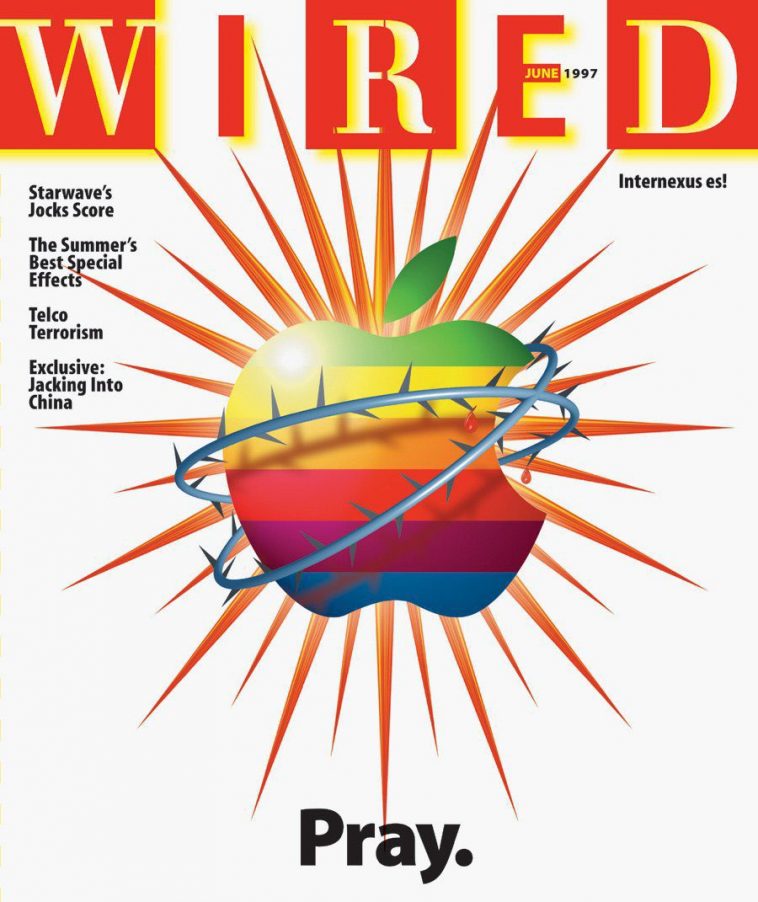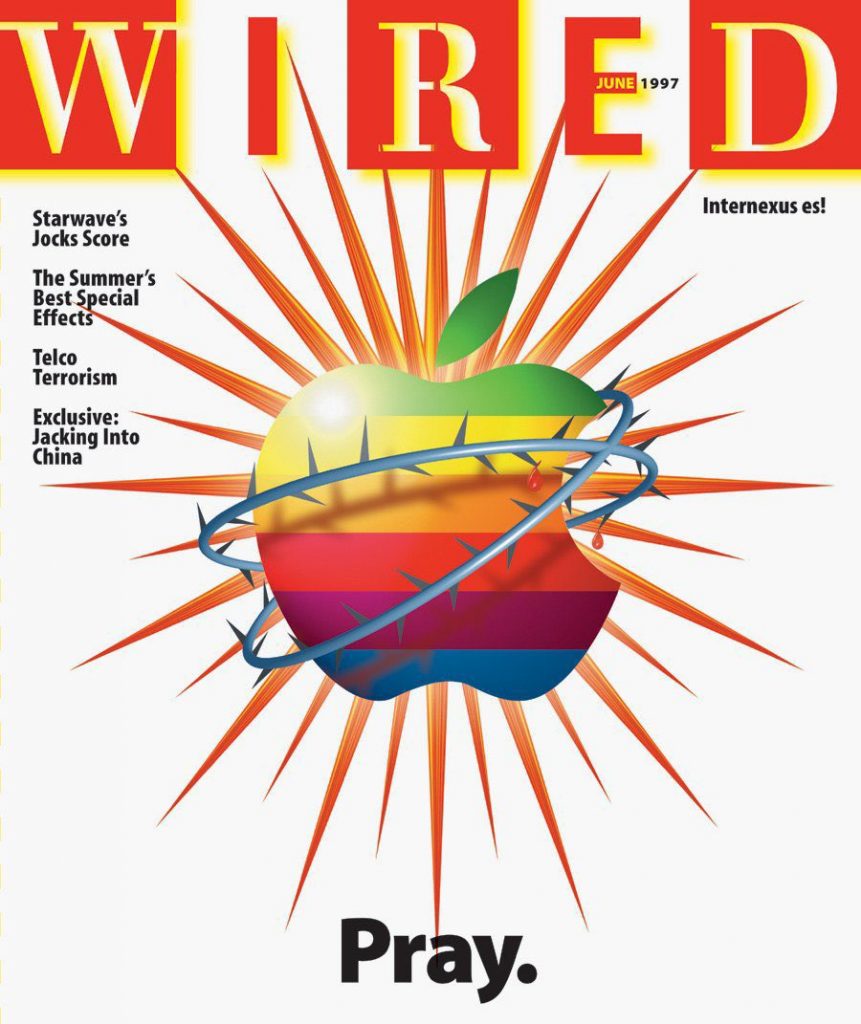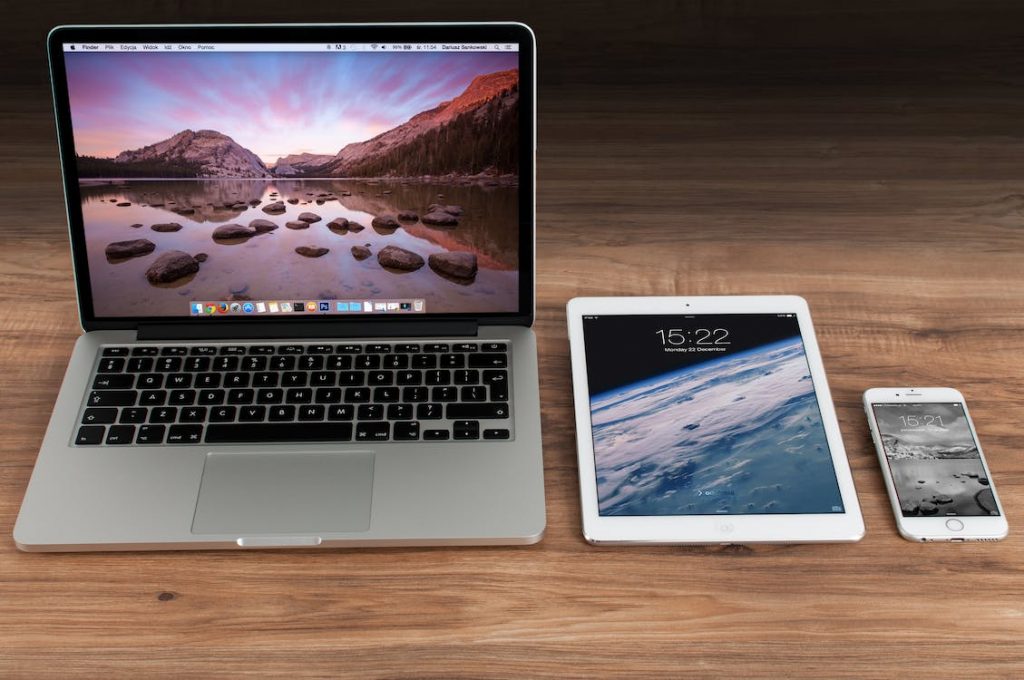In 1997, Apple was on the brink of bankruptcy. Apple lost $1 billion. The company was facing intense competition from Microsoft and its Windows operating system, and it was struggling to find a foothold in the rapidly evolving technology landscape. However, over the next few decades, Apple went through a remarkable transformation that would make it one of the most valuable companies in the world.
Fast forward to today, and Apple is a juggernaut of a company, with a market capitalization of over $2 trillion. It’s hard to imagine that just 24 years ago, Apple lost $1 billion in a year. In January 2022, Apple became the first company to reach a $3 trillion market cap. Today, it makes $1 billion every 3 days.
Leadership can make all the difference in the world
— Elon Musk (@elonmusk) April 14, 2023
A front cover in WIRED in 1997 reflects on the agony Apple went through in a year.
How did Apple turn things around?
There are a few key factors that contributed to the company’s success. To begin with, the company did face severe issues as reported in 2016. Apple’s fiscal year revenue in 2022 was $394.33 billion. The question is, how did Apple turn things around?
First, Apple made some smart strategic decisions that helped it gain a foothold in new markets. For example, in the early 2000s, Apple recognized the potential of the MP3 player market and released the iPod, which quickly became a cultural phenomenon. The iPod paved the way for Apple’s entry into the smartphone market, which it dominated with the release of the iPhone in 2007.
Another key factor in Apple’s success is its ability to innovate. Apple has always been a company that’s willing to take risks and push the envelope when it comes to technology. This has resulted in some of the most iconic products of our time, from the Macintosh computer to the Apple Watch.
But it’s not just about the products themselves. Apple has also been incredibly successful at creating a brand that resonates with consumers. From its sleek and modern design aesthetic to its focus on user experience, Apple has built a reputation for quality and innovation that has helped it stand out in a crowded market.
Of course, it’s not all sunshine and roses for Apple. The company has faced its fair share of challenges over the years, from antitrust lawsuits to accusations of labor abuses in its supply chain. However, Apple has shown a remarkable ability to weather these storms and continue to grow.
Looking to the future, there are a few key trends that will likely shape Apple’s trajectory. One is the continued growth of the smartphone market, particularly in emerging economies. Apple has historically focused on the premium end of the market, but it may need to shift its strategy in order to capture more market share in these regions.
Another trend to watch is the rise of wearable technology. The Apple Watch has been a solid performer for the company, but there’s still plenty of room for growth in this market. As health and fitness become increasingly important to consumers, Apple could be well-positioned to take advantage of this trend.
Finally, there’s the question of what’s next for Apple in terms of innovation. The company has been relatively quiet in recent years when it comes to groundbreaking new products. However, rumors persist about everything from an Apple car to a virtual reality headset. Whatever Apple’s next big thing turns out to be, it’s sure to capture the imagination of consumers and drive the company’s growth for years to come.
The world of iPhone & iPad:
The iPhone and iPad have undoubtedly been the main driving force behind Apple’s growth over the past decade. These two products have revolutionized the smartphone and tablet markets, respectively, and have helped Apple capture a significant share of both markets.
The iPhone, in particular, has been a huge success for Apple. Since its launch in 2007, the iPhone has become one of the most iconic consumer products of our time. It has sold over 2.2 billion units worldwide, making it one of the best-selling products of all time. The iPhone has also been a major source of revenue for Apple, accounting for more than half of the company’s total revenue in recent years.
One of the reasons why the iPhone has been so successful is its design and user experience. Apple has always placed a strong emphasis on user experience, and the iPhone is no exception. From the intuitive touch screen to the seamless integration with Apple’s other products and services, the iPhone has set the standard for what a smartphone should be.
Another factor in the success of the iPhone is Apple’s marketing and branding. The company has built a reputation for quality and innovation that has helped it stand out in a crowded market. Apple’s advertising campaigns for the iPhone have been particularly effective, using catchy slogans like “Think Different” and “There’s an App for That” to capture consumers’ attention.
The iPad, while not as popular as the iPhone, has still been a significant contributor to Apple’s growth. Since its launch in 2010, the iPad has sold over 400 million units worldwide. While the tablet market has not grown as quickly as the smartphone market, the iPad has still managed to capture a significant share of the market.
One of the reasons for the iPad’s success is its versatility. The iPad can be used for everything from streaming movies and playing games to productivity tasks like email and document editing. This versatility has helped the iPad appeal to a wide range of consumers, from students to business professionals.
Like the iPhone, the iPad has also benefited from Apple’s strong branding and marketing. Apple has positioned the iPad as a premium product and has focused on creating a premium user experience. This has helped the iPad stand out in a market that is becoming increasingly crowded with low-cost, low-quality tablets.
As long as Apple continues to innovate and push the envelope when it comes to technology, it’s likely that these two products will continue to be major contributors to the company’s success in the years to come.
The Apple Culture We All Live In:
One of the most notable aspects of Apple’s culture is its emphasis on design. The company places a strong emphasis on creating products that are not only functional but also visually appealing. This is evident in the design of Apple’s products, which are known for their sleek, minimalist aesthetics. The company has a team of world-class designers who work tirelessly to create products that are both beautiful and functional.
Another key aspect of Apple’s culture is its commitment to innovation. The company is known for taking risks and pushing the boundaries of what is possible. This is evident in the development of products like the iPhone, which revolutionized the smartphone market and set a new standard for what a smartphone should be. Apple’s commitment to innovation is also evident in its ongoing development of new products and technologies, such as augmented reality and autonomous driving.
Conclusion:
The story of Apple’s transformation from a struggling tech company to one of the most valuable companies in the world is a testament to the power of innovation, smart strategy, and a strong brand. While there have been plenty of bumps in the road along the way, Apple has shown a remarkable ability to adapt to changing market conditions and stay ahead of the curve. As the company continues to grow and evolve, it will be fascinating to see what the future holds for this tech giant.






